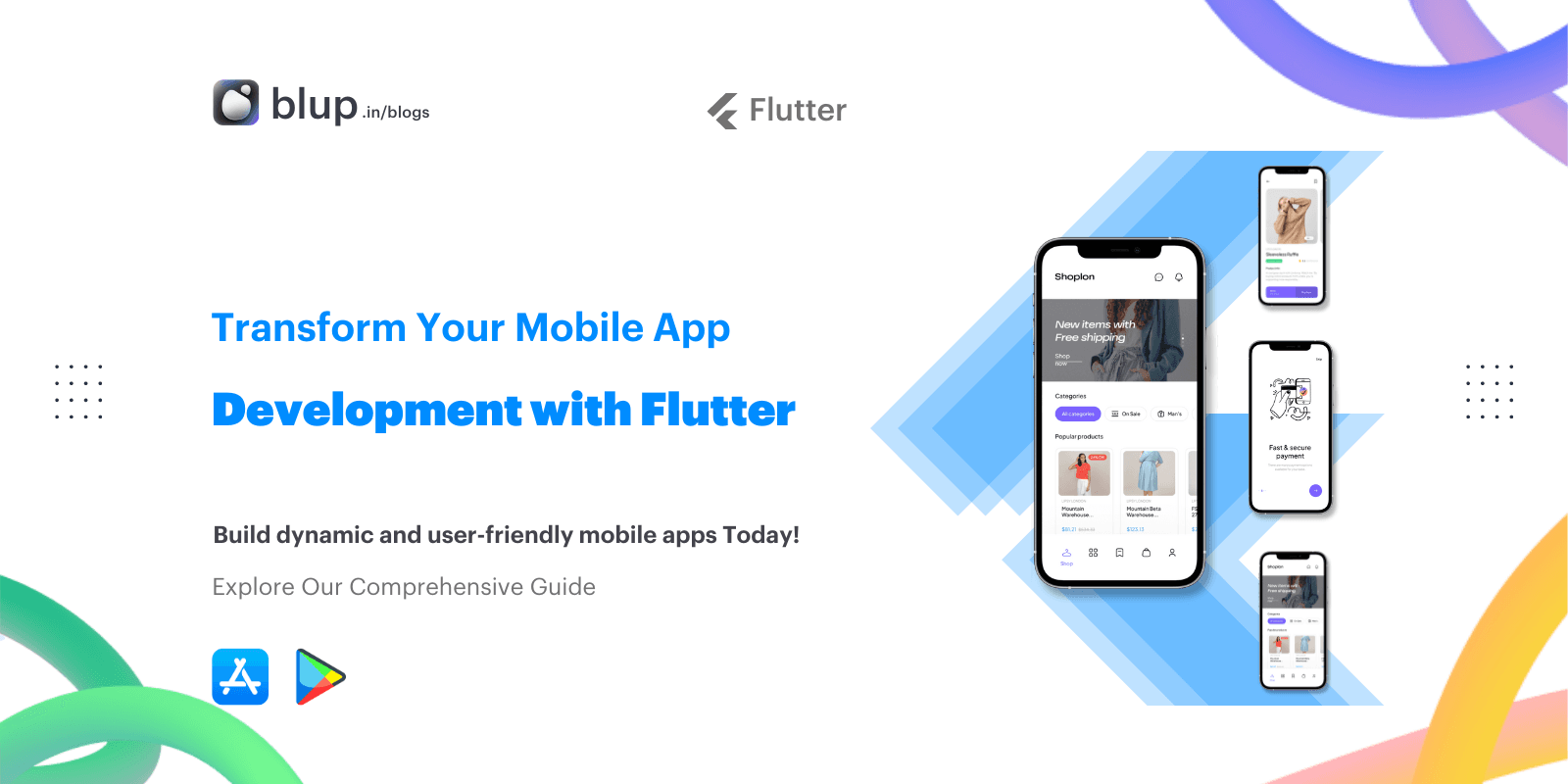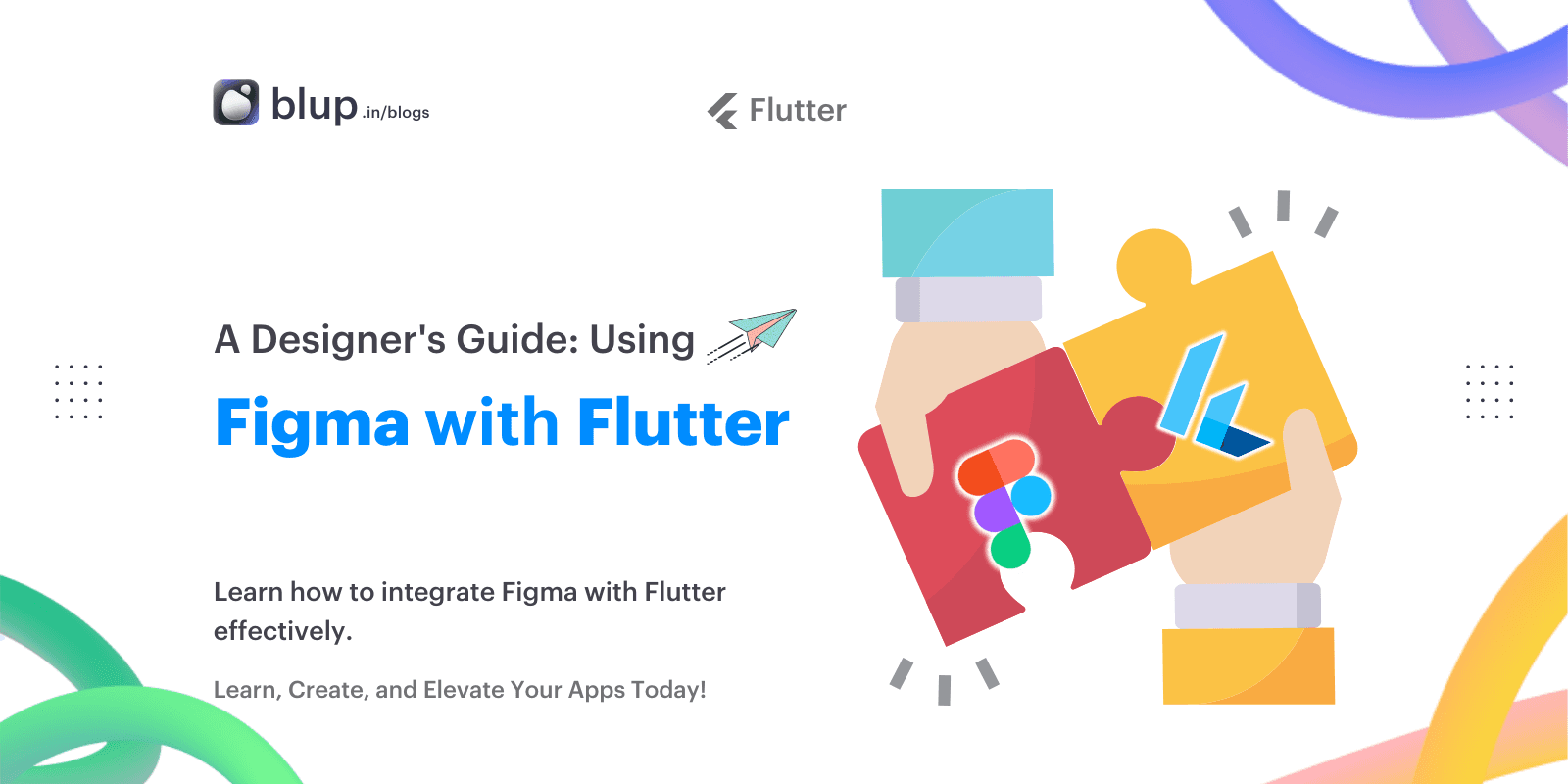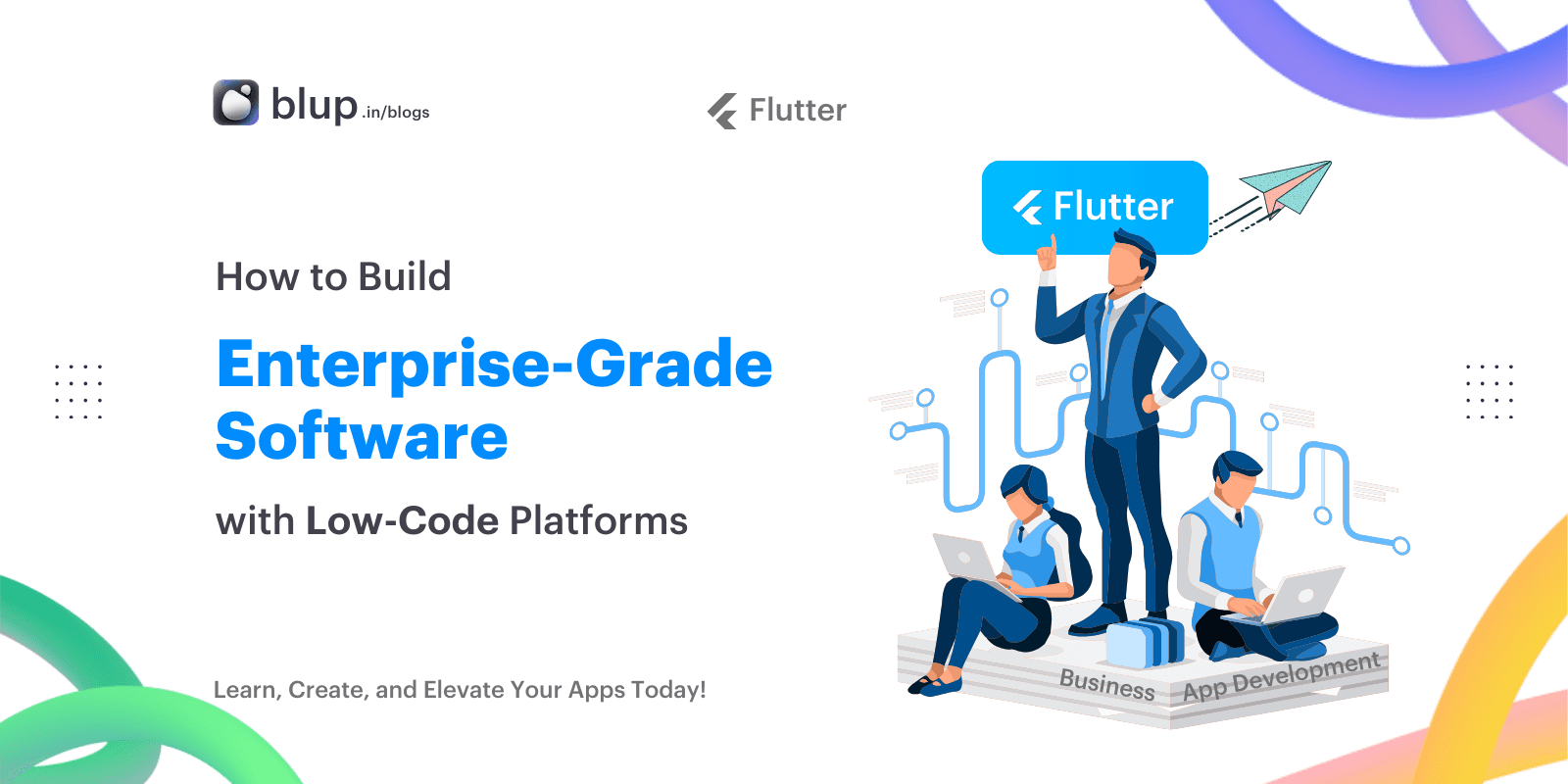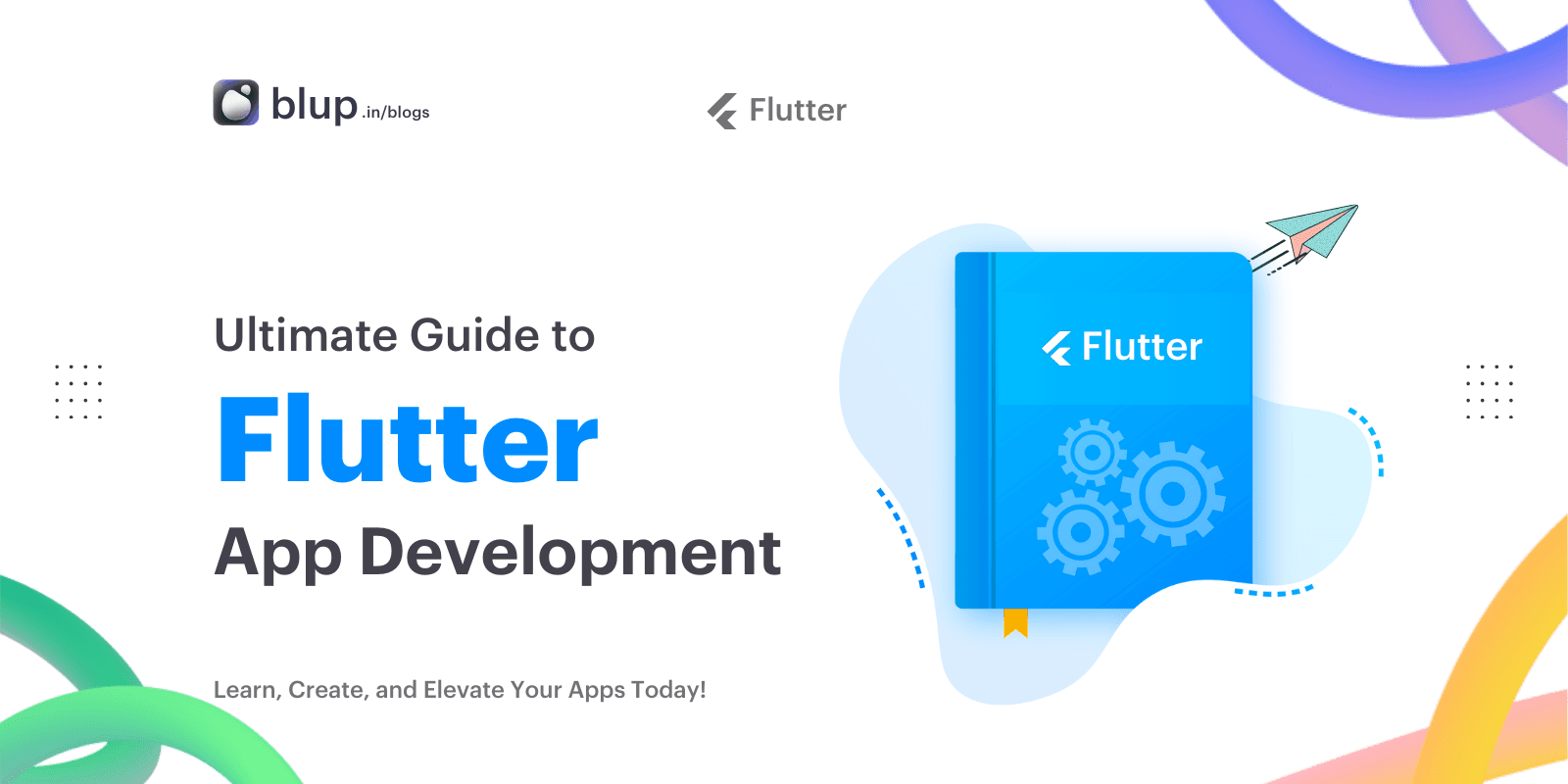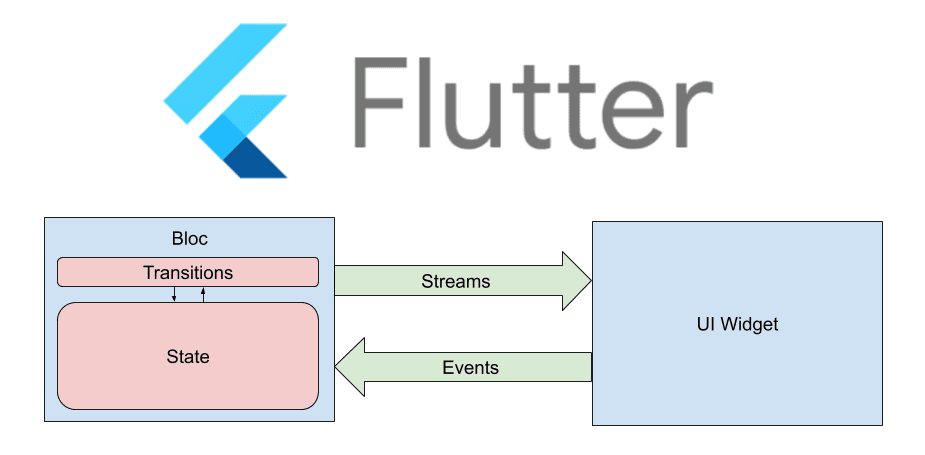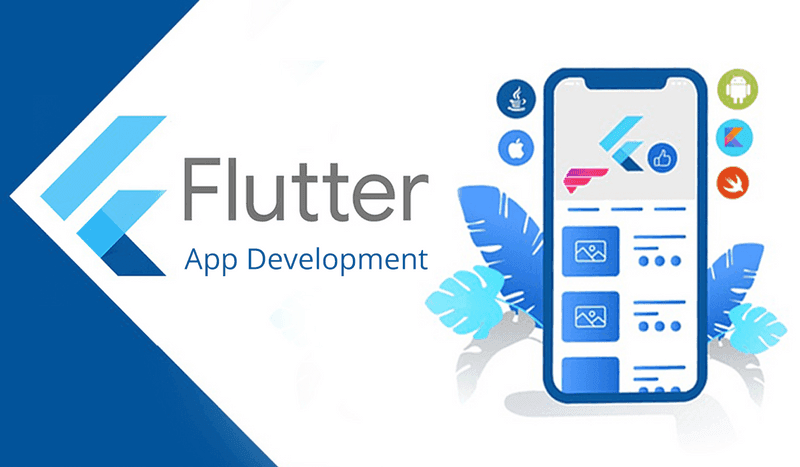Top Trends in Flutter App Development for 2024


Introduction
Introduction
Introduction
Introduction
Flutter, Google's UI toolkit for crafting natively compiled applications for mobile, web, and desktop from a single codebase, continues to gain momentum in the app development world. As businesses and developers strive for efficiency and consistency, Flutter's cross-platform capabilities make it an increasingly attractive option. This blog delves into the emerging trends shaping Flutter app development in 2024, providing insights to help you stay ahead of the curve.
This blog aims to explore the key trends shaping the future of Flutter app development in 2024. From enhanced UI/UX design to the integration of AI and IoT, these trends will help developers and businesses leverage the full potential of Flutter.
Flutter, Google's UI toolkit for crafting natively compiled applications for mobile, web, and desktop from a single codebase, continues to gain momentum in the app development world. As businesses and developers strive for efficiency and consistency, Flutter's cross-platform capabilities make it an increasingly attractive option. This blog delves into the emerging trends shaping Flutter app development in 2024, providing insights to help you stay ahead of the curve.
This blog aims to explore the key trends shaping the future of Flutter app development in 2024. From enhanced UI/UX design to the integration of AI and IoT, these trends will help developers and businesses leverage the full potential of Flutter.
Flutter, Google's UI toolkit for crafting natively compiled applications for mobile, web, and desktop from a single codebase, continues to gain momentum in the app development world. As businesses and developers strive for efficiency and consistency, Flutter's cross-platform capabilities make it an increasingly attractive option. This blog delves into the emerging trends shaping Flutter app development in 2024, providing insights to help you stay ahead of the curve.
This blog aims to explore the key trends shaping the future of Flutter app development in 2024. From enhanced UI/UX design to the integration of AI and IoT, these trends will help developers and businesses leverage the full potential of Flutter.
Flutter, Google's UI toolkit for crafting natively compiled applications for mobile, web, and desktop from a single codebase, continues to gain momentum in the app development world. As businesses and developers strive for efficiency and consistency, Flutter's cross-platform capabilities make it an increasingly attractive option. This blog delves into the emerging trends shaping Flutter app development in 2024, providing insights to help you stay ahead of the curve.
This blog aims to explore the key trends shaping the future of Flutter app development in 2024. From enhanced UI/UX design to the integration of AI and IoT, these trends will help developers and businesses leverage the full potential of Flutter.
Rise of Flutter in Mobile App Development
Rise of Flutter in Mobile App Development
Rise of Flutter in Mobile App Development
Rise of Flutter in Mobile App Development
Growth and Adoption
Flutter has seen exponential growth in adoption among developers and businesses. Its ability to deliver high-performance apps with a single codebase is a significant driver of this popularity. As more enterprises seek cost-effective and efficient development solutions, Flutter's market expansion shows no signs of slowing down.
Advantages
Key benefits driving Flutter's popularity include:
Cross-Platform Consistency: Write once, run anywhere, reducing development time and costs.
Rich Widget Library: Access to a comprehensive set of pre-designed widgets that adhere to platform-specific guidelines.
Hot Reload: Real-time code changes enhance productivity and speed up the development process.
Growth and Adoption
Flutter has seen exponential growth in adoption among developers and businesses. Its ability to deliver high-performance apps with a single codebase is a significant driver of this popularity. As more enterprises seek cost-effective and efficient development solutions, Flutter's market expansion shows no signs of slowing down.
Advantages
Key benefits driving Flutter's popularity include:
Cross-Platform Consistency: Write once, run anywhere, reducing development time and costs.
Rich Widget Library: Access to a comprehensive set of pre-designed widgets that adhere to platform-specific guidelines.
Hot Reload: Real-time code changes enhance productivity and speed up the development process.
Growth and Adoption
Flutter has seen exponential growth in adoption among developers and businesses. Its ability to deliver high-performance apps with a single codebase is a significant driver of this popularity. As more enterprises seek cost-effective and efficient development solutions, Flutter's market expansion shows no signs of slowing down.
Advantages
Key benefits driving Flutter's popularity include:
Cross-Platform Consistency: Write once, run anywhere, reducing development time and costs.
Rich Widget Library: Access to a comprehensive set of pre-designed widgets that adhere to platform-specific guidelines.
Hot Reload: Real-time code changes enhance productivity and speed up the development process.
Growth and Adoption
Flutter has seen exponential growth in adoption among developers and businesses. Its ability to deliver high-performance apps with a single codebase is a significant driver of this popularity. As more enterprises seek cost-effective and efficient development solutions, Flutter's market expansion shows no signs of slowing down.
Advantages
Key benefits driving Flutter's popularity include:
Cross-Platform Consistency: Write once, run anywhere, reducing development time and costs.
Rich Widget Library: Access to a comprehensive set of pre-designed widgets that adhere to platform-specific guidelines.
Hot Reload: Real-time code changes enhance productivity and speed up the development process.
Enhanced UI/UX Design Trends
Enhanced UI/UX Design Trends
Enhanced UI/UX Design Trends
Enhanced UI/UX Design Trends
Flutter for Design Innovation
Flutter's design capabilities set it apart in the mobile development landscape.
Material Design
Flutter seamlessly integrates Google's Material Design principles, ensuring a consistent and intuitive user experience across Android and iOS platforms. This integration allows developers to create visually appealing and user-friendly interfaces.
Custom Animation
Flutter's powerful animation libraries enable developers to create engaging and interactive user interfaces. Custom animations enhance user interactions, making apps more dynamic and visually appealing.
Flutter for Design Innovation
Flutter's design capabilities set it apart in the mobile development landscape.
Material Design
Flutter seamlessly integrates Google's Material Design principles, ensuring a consistent and intuitive user experience across Android and iOS platforms. This integration allows developers to create visually appealing and user-friendly interfaces.
Custom Animation
Flutter's powerful animation libraries enable developers to create engaging and interactive user interfaces. Custom animations enhance user interactions, making apps more dynamic and visually appealing.
Flutter for Design Innovation
Flutter's design capabilities set it apart in the mobile development landscape.
Material Design
Flutter seamlessly integrates Google's Material Design principles, ensuring a consistent and intuitive user experience across Android and iOS platforms. This integration allows developers to create visually appealing and user-friendly interfaces.
Custom Animation
Flutter's powerful animation libraries enable developers to create engaging and interactive user interfaces. Custom animations enhance user interactions, making apps more dynamic and visually appealing.
Flutter for Design Innovation
Flutter's design capabilities set it apart in the mobile development landscape.
Material Design
Flutter seamlessly integrates Google's Material Design principles, ensuring a consistent and intuitive user experience across Android and iOS platforms. This integration allows developers to create visually appealing and user-friendly interfaces.
Custom Animation
Flutter's powerful animation libraries enable developers to create engaging and interactive user interfaces. Custom animations enhance user interactions, making apps more dynamic and visually appealing.
Integration with AI and Machine Learning
Integration with AI and Machine Learning
Integration with AI and Machine Learning
Integration with AI and Machine Learning

AI-Powered Flutter Apps
In 2024, integrating AI and machine learning with Flutter will become more prevalent, enabling smarter and more intuitive applications.
Intelligent Apps:
The integration of AI and machine learning models into Flutter applications is set to revolutionize app functionalities. In 2024, we will see more apps using AI for predictive analytics, personalized experiences, and intelligent automation.
Voice Recognition:
Voice-enabled features are becoming increasingly popular. With the help of Flutter plugins and AI APIs, developers can incorporate sophisticated voice recognition capabilities into their apps, providing users with hands-free and voice-command functionalities.

AI-Powered Flutter Apps
In 2024, integrating AI and machine learning with Flutter will become more prevalent, enabling smarter and more intuitive applications.
Intelligent Apps:
The integration of AI and machine learning models into Flutter applications is set to revolutionize app functionalities. In 2024, we will see more apps using AI for predictive analytics, personalized experiences, and intelligent automation.
Voice Recognition:
Voice-enabled features are becoming increasingly popular. With the help of Flutter plugins and AI APIs, developers can incorporate sophisticated voice recognition capabilities into their apps, providing users with hands-free and voice-command functionalities.

AI-Powered Flutter Apps
In 2024, integrating AI and machine learning with Flutter will become more prevalent, enabling smarter and more intuitive applications.
Intelligent Apps:
The integration of AI and machine learning models into Flutter applications is set to revolutionize app functionalities. In 2024, we will see more apps using AI for predictive analytics, personalized experiences, and intelligent automation.
Voice Recognition:
Voice-enabled features are becoming increasingly popular. With the help of Flutter plugins and AI APIs, developers can incorporate sophisticated voice recognition capabilities into their apps, providing users with hands-free and voice-command functionalities.

AI-Powered Flutter Apps
In 2024, integrating AI and machine learning with Flutter will become more prevalent, enabling smarter and more intuitive applications.
Intelligent Apps:
The integration of AI and machine learning models into Flutter applications is set to revolutionize app functionalities. In 2024, we will see more apps using AI for predictive analytics, personalized experiences, and intelligent automation.
Voice Recognition:
Voice-enabled features are becoming increasingly popular. With the help of Flutter plugins and AI APIs, developers can incorporate sophisticated voice recognition capabilities into their apps, providing users with hands-free and voice-command functionalities.
Real-Time Data Streaming and IoT Integration
Real-Time Data Streaming and IoT Integration
Real-Time Data Streaming and IoT Integration
Real-Time Data Streaming and IoT Integration
IoT and Flutter:
IoT Applications: Flutter is proving to be a strong contender in the IoT space. The framework’s ability to handle real-time data streaming makes it ideal for developing IoT applications. In 2024, expect to see more Flutter-based IoT solutions that provide seamless data synchronization and enhanced user experiences.
Sync Services: Integrating Flutter with cloud services and IoT platforms enables real-time data updates and synchronization. This integration is crucial for applications that rely on constant data flow and connectivity, ensuring that users have access to the most up-to-date information.
IoT and Flutter:
IoT Applications: Flutter is proving to be a strong contender in the IoT space. The framework’s ability to handle real-time data streaming makes it ideal for developing IoT applications. In 2024, expect to see more Flutter-based IoT solutions that provide seamless data synchronization and enhanced user experiences.
Sync Services: Integrating Flutter with cloud services and IoT platforms enables real-time data updates and synchronization. This integration is crucial for applications that rely on constant data flow and connectivity, ensuring that users have access to the most up-to-date information.
IoT and Flutter:
IoT Applications: Flutter is proving to be a strong contender in the IoT space. The framework’s ability to handle real-time data streaming makes it ideal for developing IoT applications. In 2024, expect to see more Flutter-based IoT solutions that provide seamless data synchronization and enhanced user experiences.
Sync Services: Integrating Flutter with cloud services and IoT platforms enables real-time data updates and synchronization. This integration is crucial for applications that rely on constant data flow and connectivity, ensuring that users have access to the most up-to-date information.
IoT and Flutter:
IoT Applications: Flutter is proving to be a strong contender in the IoT space. The framework’s ability to handle real-time data streaming makes it ideal for developing IoT applications. In 2024, expect to see more Flutter-based IoT solutions that provide seamless data synchronization and enhanced user experiences.
Sync Services: Integrating Flutter with cloud services and IoT platforms enables real-time data updates and synchronization. This integration is crucial for applications that rely on constant data flow and connectivity, ensuring that users have access to the most up-to-date information.
State Management Solutions
State Management Solutions
State Management Solutions
State Management Solutions
Efficient State Management:
Provider and Riverpod: State management is a critical aspect of app development. Libraries like Provider and Riverpod offer efficient ways to manage state in Flutter apps. These tools will continue to be popular in 2024, helping developers handle complex state management scenarios with ease.
Redux Integration: For applications with complex state requirements, Redux offers a predictable state container. Implementing Redux in Flutter apps allows for better state management, making it easier to debug and maintain applications.
Efficient State Management:
Provider and Riverpod: State management is a critical aspect of app development. Libraries like Provider and Riverpod offer efficient ways to manage state in Flutter apps. These tools will continue to be popular in 2024, helping developers handle complex state management scenarios with ease.
Redux Integration: For applications with complex state requirements, Redux offers a predictable state container. Implementing Redux in Flutter apps allows for better state management, making it easier to debug and maintain applications.
Efficient State Management:
Provider and Riverpod: State management is a critical aspect of app development. Libraries like Provider and Riverpod offer efficient ways to manage state in Flutter apps. These tools will continue to be popular in 2024, helping developers handle complex state management scenarios with ease.
Redux Integration: For applications with complex state requirements, Redux offers a predictable state container. Implementing Redux in Flutter apps allows for better state management, making it easier to debug and maintain applications.
Efficient State Management:
Provider and Riverpod: State management is a critical aspect of app development. Libraries like Provider and Riverpod offer efficient ways to manage state in Flutter apps. These tools will continue to be popular in 2024, helping developers handle complex state management scenarios with ease.
Redux Integration: For applications with complex state requirements, Redux offers a predictable state container. Implementing Redux in Flutter apps allows for better state management, making it easier to debug and maintain applications.
Accessibility and Inclusivity
Accessibility and Inclusivity
Accessibility and Inclusivity
Accessibility and Inclusivity
Accessible Flutter Apps:
Accessibility Features: Designing apps with accessibility in mind is not just a trend but a necessity. Flutter’s built-in accessibility features ensure that apps can be used by individuals with disabilities. In 2024, there will be a stronger emphasis on creating inclusive designs that cater to a wider audience.
Inclusive Design: Best practices for inclusive design involve considering diverse user needs from the start. This approach will become more prevalent as developers aim to reach a broader audience and comply with accessibility standards.
Accessible Flutter Apps:
Accessibility Features: Designing apps with accessibility in mind is not just a trend but a necessity. Flutter’s built-in accessibility features ensure that apps can be used by individuals with disabilities. In 2024, there will be a stronger emphasis on creating inclusive designs that cater to a wider audience.
Inclusive Design: Best practices for inclusive design involve considering diverse user needs from the start. This approach will become more prevalent as developers aim to reach a broader audience and comply with accessibility standards.
Accessible Flutter Apps:
Accessibility Features: Designing apps with accessibility in mind is not just a trend but a necessity. Flutter’s built-in accessibility features ensure that apps can be used by individuals with disabilities. In 2024, there will be a stronger emphasis on creating inclusive designs that cater to a wider audience.
Inclusive Design: Best practices for inclusive design involve considering diverse user needs from the start. This approach will become more prevalent as developers aim to reach a broader audience and comply with accessibility standards.
Accessible Flutter Apps:
Accessibility Features: Designing apps with accessibility in mind is not just a trend but a necessity. Flutter’s built-in accessibility features ensure that apps can be used by individuals with disabilities. In 2024, there will be a stronger emphasis on creating inclusive designs that cater to a wider audience.
Inclusive Design: Best practices for inclusive design involve considering diverse user needs from the start. This approach will become more prevalent as developers aim to reach a broader audience and comply with accessibility standards.
Progressive Web Apps (PWAs) with Flutter
Progressive Web Apps (PWAs) with Flutter
Progressive Web Apps (PWAs) with Flutter
Progressive Web Apps (PWAs) with Flutter
PWAs Development:
PWAs and Flutter: Progressive Web Apps (PWAs) offer the advantages of both web and mobile apps. Flutter’s capability to build PWAs will gain more traction in 2024, providing users with enhanced web experiences that are fast, reliable, and engaging across all devices.
Offline Capabilities: Flutter’s offline-first approach is ideal for PWAs. This capability ensures that apps remain functional even without an internet connection, providing a seamless user experience at all times.
Security and Compliance Considerations
Data Security Measures:
Secure Coding Practices: Security remains a top priority in app development. Implementing secure coding practices and encryption standards in Flutter apps will be crucial in 2024. Developers must ensure that their apps are resilient against security threats and vulnerabilities.
Regulatory Compliance: Adhering to data protection regulations such as GDPR and CCPA is essential. In 2024, developers will need to focus more on compliance, ensuring that their apps handle user data responsibly and transparently.
PWAs Development:
PWAs and Flutter: Progressive Web Apps (PWAs) offer the advantages of both web and mobile apps. Flutter’s capability to build PWAs will gain more traction in 2024, providing users with enhanced web experiences that are fast, reliable, and engaging across all devices.
Offline Capabilities: Flutter’s offline-first approach is ideal for PWAs. This capability ensures that apps remain functional even without an internet connection, providing a seamless user experience at all times.
Security and Compliance Considerations
Data Security Measures:
Secure Coding Practices: Security remains a top priority in app development. Implementing secure coding practices and encryption standards in Flutter apps will be crucial in 2024. Developers must ensure that their apps are resilient against security threats and vulnerabilities.
Regulatory Compliance: Adhering to data protection regulations such as GDPR and CCPA is essential. In 2024, developers will need to focus more on compliance, ensuring that their apps handle user data responsibly and transparently.
PWAs Development:
PWAs and Flutter: Progressive Web Apps (PWAs) offer the advantages of both web and mobile apps. Flutter’s capability to build PWAs will gain more traction in 2024, providing users with enhanced web experiences that are fast, reliable, and engaging across all devices.
Offline Capabilities: Flutter’s offline-first approach is ideal for PWAs. This capability ensures that apps remain functional even without an internet connection, providing a seamless user experience at all times.
Security and Compliance Considerations
Data Security Measures:
Secure Coding Practices: Security remains a top priority in app development. Implementing secure coding practices and encryption standards in Flutter apps will be crucial in 2024. Developers must ensure that their apps are resilient against security threats and vulnerabilities.
Regulatory Compliance: Adhering to data protection regulations such as GDPR and CCPA is essential. In 2024, developers will need to focus more on compliance, ensuring that their apps handle user data responsibly and transparently.
PWAs Development:
PWAs and Flutter: Progressive Web Apps (PWAs) offer the advantages of both web and mobile apps. Flutter’s capability to build PWAs will gain more traction in 2024, providing users with enhanced web experiences that are fast, reliable, and engaging across all devices.
Offline Capabilities: Flutter’s offline-first approach is ideal for PWAs. This capability ensures that apps remain functional even without an internet connection, providing a seamless user experience at all times.
Security and Compliance Considerations
Data Security Measures:
Secure Coding Practices: Security remains a top priority in app development. Implementing secure coding practices and encryption standards in Flutter apps will be crucial in 2024. Developers must ensure that their apps are resilient against security threats and vulnerabilities.
Regulatory Compliance: Adhering to data protection regulations such as GDPR and CCPA is essential. In 2024, developers will need to focus more on compliance, ensuring that their apps handle user data responsibly and transparently.
Future Outlook and Predictions
Future Outlook and Predictions
Future Outlook and Predictions
Future Outlook and Predictions
Emerging Technologies:
Blockchain and Flutter: The potential integration of blockchain technology with Flutter could revolutionize secure transactions and data integrity in mobile apps. This trend is worth watching as it could open up new avenues for secure app development.
Augmented Reality (AR): AR applications are becoming more sophisticated, and Flutter’s capabilities in this area are expanding. The combination of Flutter and ARCore will enable developers to create immersive AR experiences, enhancing the way users interact with their environment.
Emerging Technologies:
Blockchain and Flutter: The potential integration of blockchain technology with Flutter could revolutionize secure transactions and data integrity in mobile apps. This trend is worth watching as it could open up new avenues for secure app development.
Augmented Reality (AR): AR applications are becoming more sophisticated, and Flutter’s capabilities in this area are expanding. The combination of Flutter and ARCore will enable developers to create immersive AR experiences, enhancing the way users interact with their environment.
Emerging Technologies:
Blockchain and Flutter: The potential integration of blockchain technology with Flutter could revolutionize secure transactions and data integrity in mobile apps. This trend is worth watching as it could open up new avenues for secure app development.
Augmented Reality (AR): AR applications are becoming more sophisticated, and Flutter’s capabilities in this area are expanding. The combination of Flutter and ARCore will enable developers to create immersive AR experiences, enhancing the way users interact with their environment.
Emerging Technologies:
Blockchain and Flutter: The potential integration of blockchain technology with Flutter could revolutionize secure transactions and data integrity in mobile apps. This trend is worth watching as it could open up new avenues for secure app development.
Augmented Reality (AR): AR applications are becoming more sophisticated, and Flutter’s capabilities in this area are expanding. The combination of Flutter and ARCore will enable developers to create immersive AR experiences, enhancing the way users interact with their environment.
Conclusion
Conclusion
Conclusion
Conclusion
2024 is set to be an exciting year for Flutter app development. The trends highlighted in this blog showcase the innovations and advancements that will shape the future of mobile applications. From enhanced UI/UX design and AI integration to real-time data streaming and secure development practices, staying updated with these trends is essential for developers and businesses.
Keeping abreast of these trends will not only help you stay competitive but also enable you to leverage new technologies and approaches to create innovative and impactful applications. As Flutter continues to evolve, embracing these emerging trends will be key to success in the dynamic world of app development.
Next Steps: Are you ready to take your Flutter app development to the next level? Start by integrating these trends into your projects and stay ahead of the curve. Join the Flutter community, share your experiences, and continue to innovate for future growth.
2024 is set to be an exciting year for Flutter app development. The trends highlighted in this blog showcase the innovations and advancements that will shape the future of mobile applications. From enhanced UI/UX design and AI integration to real-time data streaming and secure development practices, staying updated with these trends is essential for developers and businesses.
Keeping abreast of these trends will not only help you stay competitive but also enable you to leverage new technologies and approaches to create innovative and impactful applications. As Flutter continues to evolve, embracing these emerging trends will be key to success in the dynamic world of app development.
Next Steps: Are you ready to take your Flutter app development to the next level? Start by integrating these trends into your projects and stay ahead of the curve. Join the Flutter community, share your experiences, and continue to innovate for future growth.
2024 is set to be an exciting year for Flutter app development. The trends highlighted in this blog showcase the innovations and advancements that will shape the future of mobile applications. From enhanced UI/UX design and AI integration to real-time data streaming and secure development practices, staying updated with these trends is essential for developers and businesses.
Keeping abreast of these trends will not only help you stay competitive but also enable you to leverage new technologies and approaches to create innovative and impactful applications. As Flutter continues to evolve, embracing these emerging trends will be key to success in the dynamic world of app development.
Next Steps: Are you ready to take your Flutter app development to the next level? Start by integrating these trends into your projects and stay ahead of the curve. Join the Flutter community, share your experiences, and continue to innovate for future growth.
2024 is set to be an exciting year for Flutter app development. The trends highlighted in this blog showcase the innovations and advancements that will shape the future of mobile applications. From enhanced UI/UX design and AI integration to real-time data streaming and secure development practices, staying updated with these trends is essential for developers and businesses.
Keeping abreast of these trends will not only help you stay competitive but also enable you to leverage new technologies and approaches to create innovative and impactful applications. As Flutter continues to evolve, embracing these emerging trends will be key to success in the dynamic world of app development.
Next Steps: Are you ready to take your Flutter app development to the next level? Start by integrating these trends into your projects and stay ahead of the curve. Join the Flutter community, share your experiences, and continue to innovate for future growth.
Table of content
© 2021-25 Blupx Private Limited.
All rights reserved.
© 2021-25 Blupx Private Limited.
All rights reserved.
© 2021-25 Blupx Private Limited.
All rights reserved.



